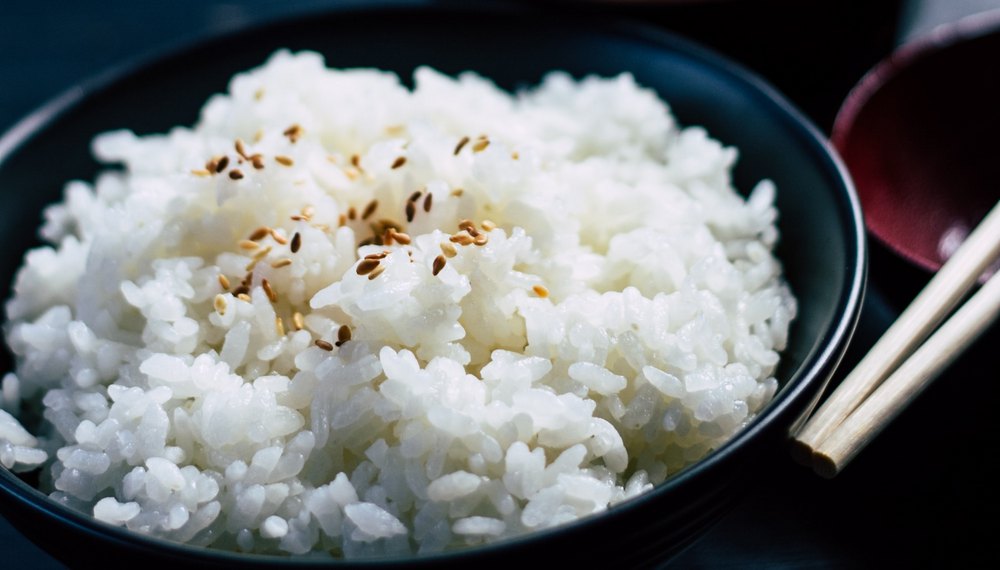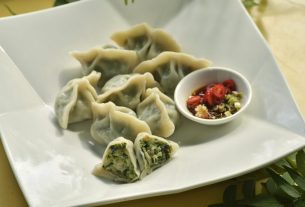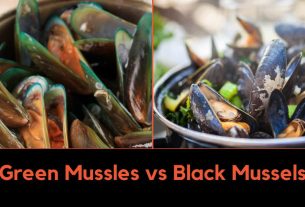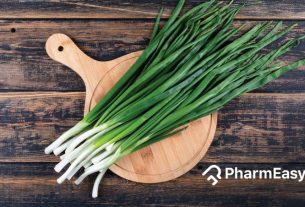The differences between basmati and jasmine rice are not far-fetched but if you do not know much about food and cooking, you could find it difficult to tell. Basmati and jasmine rice are both varieties of long-grain rice but you can get to know the difference when you focus on the texture of cooked rice as well as the size of the grain of uncooked one. Jasmine rice is clumpy and moist when cooked which is not the same with the dry and fluffy texture you will detect in basmati rice. Basmati rice that is yet to be cooked has longer and sharper grains.
These are not the only differences you will notice between basmati rice and jasmine, check them explicitly below.
Jasmine Rice and Basmati Rice: How to Tell the Difference
Basmati rice and jasmine are both widely known across the globe and they are regarded as aromatic types of rice. They both have a lot of similarities, but their differences are also on a large scale. The following key features will help you differentiate them:
- Cooking Technique
The cooking technique of both jasmine and basmati rice are not the same. If you are going to prepare a dish by using either basmati or jasmine rice, you should know the difference. The techniques of cooking greatly differ just as when their textures differ.
To cook basmati rice, soak the rice inside water for half an hour at the very least before you cook it. The grain absorbs some water and can be boiled inside saltwater and the excess water can be drained after cooking.
The technique of cooking jasmine rice is different. Consider rinsing your jasmine rice several times until when the water seems clear. This will help you remove debris and dust as well as remove surface starch that could allow the rice to even become more clumped together than normal. The method of absorption is used to cook jasmine rice which requires the addition of a measured liquid amount to the jasmine rice for it to all be properly absorbed after the process of cooking is done. Jasmine rice can also be cooked by using the steaming method.
Can You Cook Jasmine Rice and Basmati Rice in a Rice Cooker?
Both jasmine and basmati rice can be cooked inside your rice cooker like instant pot. You should still stick to soaking basmati rice for 30 minutes as its cooking technique before you put it in your rice cooker. Note that you should add lesser water than the instructions indicated on your rice cooker when you want to cook basmati rice using the rice cooker. The grains can be ensured to stay separated by adding a very little amount of oil or butter. You can demolish the rice once it is done cooking.
- Texture
You can know the differences between basmati and jasmine rice more easily after they have been cooked. Jasmine rice gets slightly clumped and moist while basmati rice becomes twice as big; the grains remain apart and in comparison to jasmine rice, much drier. Basmati has a fluffy texture while jasmine rice is clumpy and moist.
Having a feel of the cooked texture of jasmine and basmati rice is mainly concerned about the molecular structure. Basmati rice contains a high amount of amylose; a starch form that tight rice grains are formed from which is the reason basmati rice stays distinct when cooked due to the structure it holds together. Jasmine rice, however, has amylopectin; a molecule that is highly branched. The clumpy together and structure of jasmine rice are lost after cooking because of the presence of more amylopectin than amylose in the starch.
- Aroma and Flavor
Basmati rice has a fragrant aroma with a nutty aroma and flavor. Basmati as a word means ‘full of fragrance’. Jasmine rice according to its name is associated with a floral aroma. It smells like sweet popcorn when cooking. It is slightly nutty and sweet.
- Appearance
Check the grain shape and size of uncooked basmati and jasmine rice to get their differences. Basmati rice is classified as a type of rice that is long-grain that is referred to as extra-long because these grains are generally more slender and longer and the ends look much sharper than the Jasmine rice. Jasmine rice is also a long-grain type of rice but its ends are slightly rounded and are regarded as translucent.
- Origin
Both jasmine and basmati rice originated from Asia but they are from two different countries used in their respective cuisines. Basmati rice originated from what we can refer to as the Himalayas foothills which are a very popular variety of rice that is used as a part of Indian cuisine. In Pakistan, basmati rice makes a constituent of Pakistani cooking.
Jasmine rice, however, originated from Thailand and it is used widely for Taiwanese cooking. Jasmine rice is also widely grown in Vietnam, Cambodia, and Laos.
Both jasmine and basmati rice have gone over the world that it is presently not only grown in Asia. While those grown outside Asia could be good, you are advised to buy the imported types to have a true feel of the aroma. Jasmine and Basmati have both been made available for sale on Amazon, it’s very easy to order to have direct access to the true rice.
- Varieties
Basmati and jasmine rice are of two colors; brown and white. The brown being an unpolished type that does not contain much carbohydrate when compared to a white version that is a polished type whose bran of the grains has been removed.
Jasmine Rice Vs Basmati Rice: Nutrition Facts
Both basmati and jasmine rice have similar nutrition facts with both of them serving as a booster of energy and containing complex carbs.
The difference could be seen in the calories, one cup of jasmine rice that has been cooked has higher calories than its equivalent of basmati rice. They are both, however, very low in cholesterol and fat.
| One Cup, Cooked | Basmati Rice | Jasmine Rice | ||
| Calories | 191 | 238 | ||
| Daily Value | Daily Value | |||
| Total Fat | 0.61g | 1% | 3.5g | 5% |
| Carbohydrates | 39.85g | 13% | 45g | 15% |
| Sodium | 199mg | 8% | 189mg | 8% |
| Cholesterol | 0mg | 0% | 0mg | 0% |
| Protein | 5.59g | 5.34g | ||
| Iron | 2.09mg | 12% | 1.47g | 8% |
| Calcium | 18mg | 2% | 14mg | 1% |
| Potassium | 51mg | 1% | 83mg | 2% |
| Vitamin C | 0mg | 0% | 0mg | 0% |
| Vitamin A | 0IU | 0% | 144IU | 3% |

- Glycemic Index
Basmati rice has almost two times as less glycemic index as jasmine rice. Jasmine rice has a glycemic index value of 109 while Basmati rice has 58. Basmati rice is a type of food that is metabolized and digested slowly because of its low glycemic index and it is very excellent to choose provided you are trying to control your weight or control your hunger. They also lower the blood sugar levels and insulin thanks to its low glycemic index.
What to Cook with Basmati Rice?
The first set of dishes that you can associate with basmati rice is the traditional dishes in Indian because basmati rice originated from India. It can be used to eat a series of various ingredients and as a result of its fluffy texture and aromatic nature, the rice is very good alone.
Basmati rice can be served as side dishes with vegetables and chickens. You can eat basmati rice that is cooked using coconut milk can be eaten with shrimps if you are a lover of seafood. Basmati rice is present in Spanish paella and Indian biriyani which shows its versatility.
What Goes Well with Jasmine Rice?
You can use jasmine rice for many things due to its versatility. Jasmine rice can be used as side dishes for grilled proteins or vegetables or perhaps stir-fries. Jasmine rice is also very good as a side dish used for flavor stews that has a lot of gravy.
You can eat your white version of jasmine rice with the following:
- The white variety of Jasmine rice with vegetable curry that is comforting
- Jasmine rice with broccoli stir-fry and beef
- Lemony variety of jasmine rice with crispy salmon
- Pineapple and sweet-sour marinated chicken with jasmine rice.
Can You Substitute Jasmine Rice with Basmati Rice?
You can substitute your plain white long-grain rice for either basmati or jasmine rice thank to their aromatic varieties. If you, however, want to substitute either basmati or jasmine rice for each other, it depends on the type of dish you want to make. Due to their difference in texture, they both have how they can be used in specific types of recipes.
Tasty pilaf can be cooked with both jasmine and basmati rice. A creamy pudding can however not be made by using basmati but by using jasmine rice. Basmati rice that is perfectly cooked with its aroma makes a good meal with the best considered Indian curry.
Which One is Healthier?
Select the brown version of jasmine rice or the brown version of the basmati rice if you are looking to choose the one that will best be beneficial to your health. This is because the unpolished brown varieties tend to have more proteins and fibers and several other nutritional constituents.


